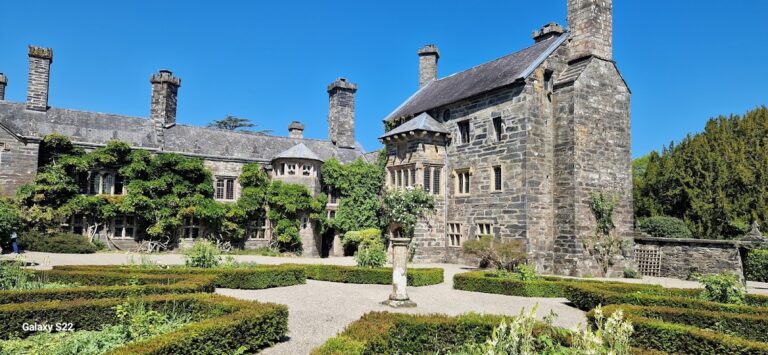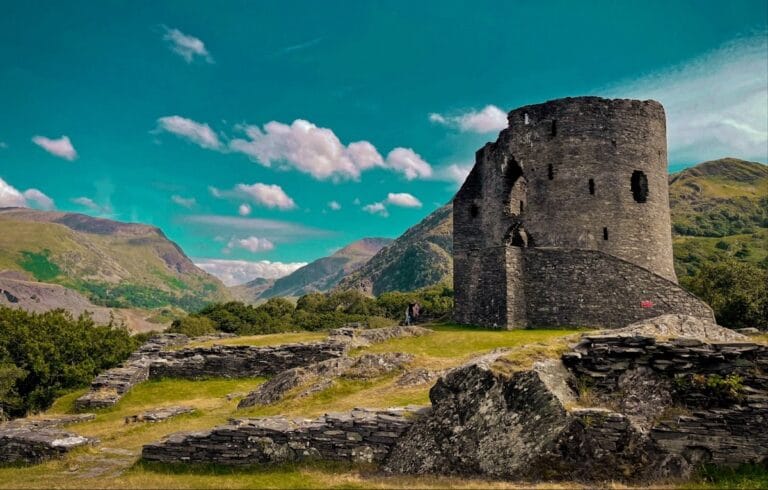Tomen y Mur: A Roman Military Fort and Norman Castle in Wales
Visitor Information
Google Rating: 4.3
Popularity: Very Low
Google Maps: View on Google Maps
Official Website: coflein.gov.uk
Country: United Kingdom
Civilization: Unclassified
Remains: Military
History
Tomen y Mur is a Roman military fortification located in the municipality of Trawsfynydd, United Kingdom. It was originally established by the Romans during their campaigns in North Wales.
The fort was founded around AD 77-78 under the leadership of the Roman governor Gnaeus Julius Agricola. Its initial purpose was to assert control over the native Ordovices tribe and to secure key Roman road networks, including the important route known as Sarn Helen. The early fort was built using timber and earthworks, housing a cavalry force of approximately 1,000 soldiers. This period represents the military expansion and consolidation of Roman influence in the region.
In the early 2nd century AD, during the reign of Emperor Hadrian, the fort was reconstructed in stone but on a reduced scale to accommodate an infantry garrison of about 500 troops. This change from a larger cavalry presence to a smaller infantry unit indicates a shift in the fort’s role, evolving from active conquest to maintaining control and garrison duties. The fort remained in use until roughly AD 140, after which it was formally abandoned by the Roman military.
Although the Romans left, the site continued to be occupied in subsequent centuries. Archaeological evidence such as a 5th-century tombstone indicates early medieval activity. Local traditions link Tomen y Mur with Welsh princely families descended from the figure Cunedda, a noted ancestor in Welsh folklore and literature like the Mabinogi. These associations reflect the site’s ongoing cultural and familial significance beyond the Roman period.
In the late 11th century, the Normans reused the site by constructing a motte-and-bailey castle within the boundaries of the old Roman fort. This Norman fortification, likely erected around 1095 during campaigns led by William Rufus, incorporated the former Roman earthworks. The name “Tomen y Mur,” which translates from Welsh as “mound of the wall,” refers to the Norman motte built on the site. Historical records mention a battle fought nearby in 1114 between forces of King Henry I and Welsh troops, underscoring the area’s continued strategic importance into the medieval period.
Throughout its history, the exact Roman name of the fort has not been recorded. However, inscription stones found in the area provide valuable information about the Roman units that took part in its construction and renovation, linking Tomen y Mur to the broader military infrastructure of Roman Britain.
Remains
Tomen y Mur occupies approximately 1.7 hectares on the slopes of Mynydd Maentwrog, overlooking the surroundings northeast of Llyn Trawsfynydd. The layout reflects typical Roman military design, initially formed by raised earth banks and timber buildings before evolving into a stone fortress. A portion of the early 2nd-century stone curtain wall has been rebuilt on-site to demonstrate the fort’s original defensive arrangements and give visitors a sense of its scale and construction.
Central to the site is a large Norman motte dating from the late 11th century. This earthen mound, constructed within the Roman fort’s perimeter, is responsible for the site’s modern Welsh name, meaning “mound of the wall.” It stands prominently and coexists with the earlier Roman earthwork defenses, showing how Norman military builders adapted existing structures to their own purposes.
Among the Roman features uncovered here is an exceptionally rare small amphitheatre, or ludus, which is rarely found in Britain. Such a facility was likely used for soldier training or possibly entertainment. This amphitheatre adds to the site’s importance as a well-equipped military center, accompanied by other structures like a bathhouse for hygiene and relaxation, and residential buildings for officers or soldiers.
Archaeologists have also identified evidence of a possible temple within the fort’s enclosure, indicating a place of worship or religious observance during the Roman occupation. A mansio, which served as an inn or stopover point for travelers and officials moving along Roman roads, has been found nearby, reflecting the fort’s role in maintaining communication networks.
Throughout the area, burial mounds mark places of interment, including a tombstone dating to the early medieval period. This shows continuity of occupation and reverence for the place beyond Roman times.
Inscriptions known as centurial stones have been recovered, some at Harlech Castle but believed to have originated from Tomen y Mur. These carved stones record the lengths of walls built by different Roman military units, providing direct evidence of the fort’s phased construction and the involvement of specific groups within the Roman army.
The site’s remote location within what is now Snowdonia National Park has contributed to the exceptional preservation of its earthworks and structural remains. Unlike many other Roman sites affected by farming or development, Tomen y Mur remains a well-defined archaeological complex where military, religious, and later Norman features coexist in a visible and informative landscape.










